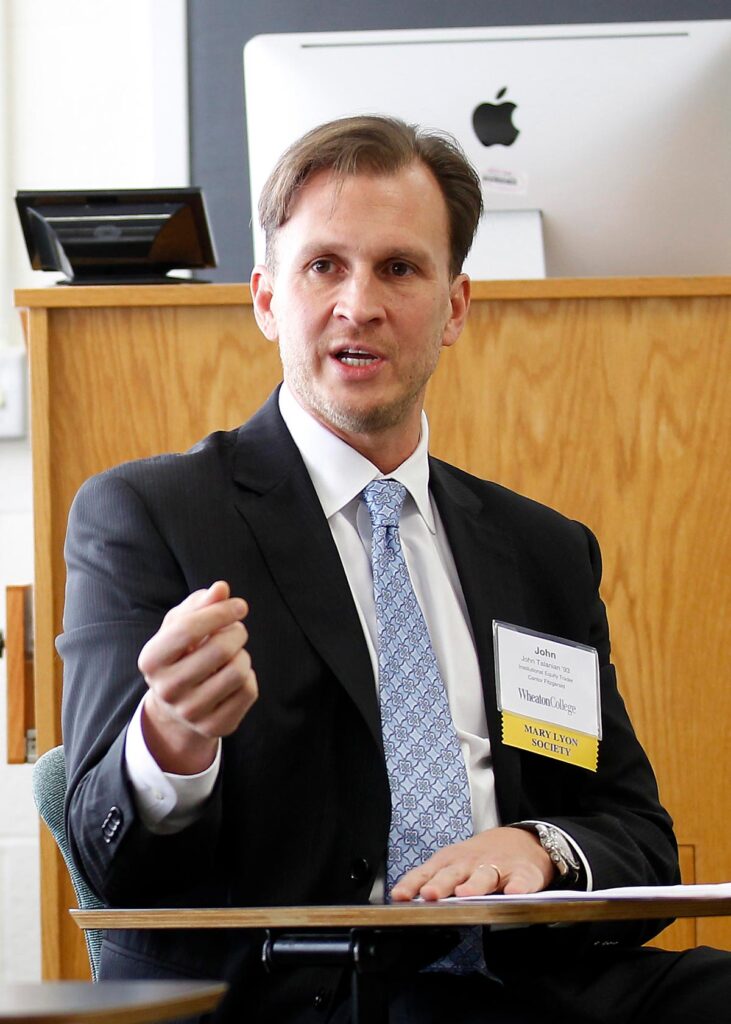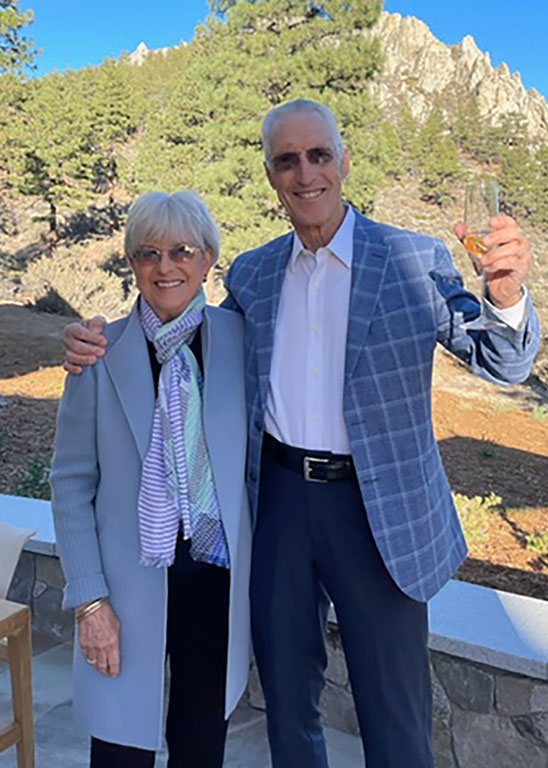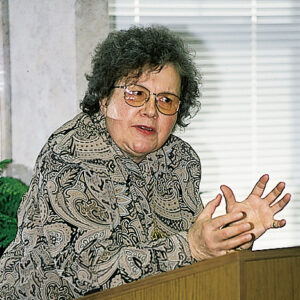This report on Wheaton College’s endowment covers the 2023 fiscal year, ending on June 30, 2023. The endowment ended the year at $256.2 million and included $19.3 million of investment returns plus $9.4 million in new gifts. This growth—resulting from expert, prudent, long-term investment management and stewardship, along with generous contributions from the college community—enabled the total spending distribution of $13.9 million in support of the college’s operating budget.
The college’s endowment is critically important to Wheaton’s future and helps sustain educational excellence. It ensures that a Wheaton education remains accessible to students, supports faculty teaching and scholarship, enables experiential opportunities such as internships for students, provides the flexibility to make strategic investments that enhance educational programs, and strengthens the institution for the future.
Fundamentally, the college’s endowment is an intergenerational gift. It began with the Wheaton family’s estate and has grown over the years through the generosity and foresight of alumni, parents, families and friends who want to ensure that Wheaton’s distinctive educational opportunities are available for the students of today and tomorrow. We are both honored by, and take seriously, the responsibility of stewardship as we lead the effort to preserve and grow this resource for the present and the future of Wheaton.
Janet Lindholm Lebovitz ’72
Chair, Board of Trustees
Maryann E. Carroll ‘79
Trustee and Chair, Investment Committee
Endowment at a glance
Fiscal Year 2023
$256.2 million
Value of the endowment
$13.9 million
Distribution to Wheaton’s operating budget
15.5%
Portion of Wheaton’s operations supported by the endowment
668
Number of individual endowed funds
8.6%
One-year annual return
Endowment overview
Fiscal Year ’23 Endowment
The value of Wheaton’s endowment increased to $256.2 million in the 2023 fiscal year, which ended on June 30, 2023. This net rise brought the endowment value to within about $10 million of its value in 2021, before the substantial global market losses incurred in fiscal year 2022. Our investment performance continues to compare favorably with relevant investment indices.
The college endowment’s $14.8 million net increase in the 2023 fiscal year came from investment performance and generous philanthropic contributions. For the year, the funds realized a total of $19.3 million in investment returns and the addition of $9.4 million in gifts from alumni, parents, families and friends. The endowment’s year-end total also reflects the $13.9 million distribution from the funds to support the college’s operating budget during the fiscal year.
Description
Values
Beginning Value
$241,464
Net Investment Return
$19,289
Gifts and additions
$9,375
Distribution
($13,910)
Ending value
$256,218
Managing the endowment
The overall investment objective for Wheaton’s endowment funds is to preserve their purchasing power in order to provide a growing stream of endowment support for the college’s programs. The college seeks to achieve on average an annual total rate of return equal to the long-term inflation rate plus the annual spending rate, or draw, of the college. (i.e., CPI + 5%)
A fundamental piece of the investment strategy for the college’s endowment centers on diversification—diversification of the types of assets in which funds are invested as well as geographic diversification across domestic, international and emerging markets. The Investment Committee of the Board sets target ranges for each asset class and reviews the college’s portfolio against these guidelines regularly throughout the year, rebalancing holdings when necessary. The current asset class breakdown is shown in Table 2.
Wheaton’s endowment is structured to capture a significant portion of upside in world equity markets, while limiting its downside exposure when markets are under pressure. In the seven years to FY23, the endowment captured 77 percent of the returns in world equity markets with about 51 percent of the risk (volatility).
While Wheaton’s endowed funds are managed to optimize risk-adjusted returns, the college also considers a broad array of Environmental, Social and Governance (ESG) factors in adopting, selecting, and regularly monitoring investment strategies and investment managers. In 2021, the Wheaton board made the decision to specifically allocate 10% of portfolio assets to managers with proactive ESG strategies.
| Description | Value |
|---|---|
| Equity (Total) | 57.8% |
| Private Investments | 8.1% |
| Real Assets | 5.1% |
| Multi-Strategy | 18.5% |
| Fixed Income | 6.2% |
| Cash & Equivalents | 4.3% |
The endowment management team
The Board of Trustees delegates to the Investment Committee the day-to-day work of overseeing the endowment portfolio based on the objectives, policies and practices as outlined in the Board’s Investment Policy. The Investment Committee currently includes 19 trustees and three non-trustee members who are experienced professionals in the investment industry or in higher education. It typically meets six times per year.
Additionally, the committee collaborates with the college’s administrative finance team and with their investment advisor, LVW Advisors, which provides outsourced chief investment officer services, including strategic counsel, research and implementation of manager selection and monitoring.
Talanian Family Work and Learning Fellows Fund
I strongly believe in the importance of internships and real-life work experiences that propel students into their professional careers. When I was a Wheaton student, my summer internship with the Boston Stock Exchange and two summers with Cantor Fitzgerald were key to landing my first job. Every Wheaton student should have the opportunity for a paid internship. By creating an endowed fund dedicated to experiential learning, my family has invested in “work and learn” opportunities that complement the rigorous academics at Wheaton.
~ John C. Talanian, Jr. ’93, Vice-Chair, Board of Trustees
Endowment use at Wheaton
Providing essential support
Wheaton College’s high-quality and flexible liberal arts education is possible with the support of the endowment. This support, which takes the form of an annual cash distribution to the operating budget of the college, provides an essential source of funding for Wheaton’s programs. Aside from tuition and fees, the endowment is the largest source of revenue underwriting annual operations.
Endowed funds directly impact the most essential aspects of a Wheaton education. Eighty-two percent of the college’s endowed funds are “restricted” to support a defined purpose identified by the donors when the endowed funds were established (Table 3). These restricted funds help to create a stable foundation for the college’s students and programs, now and for the future.
| Purpose | Total Funds | Total Endowed Value-FY’23 | Distribution |
|---|---|---|---|
| Scholarships, Fellowships, & Internships | 355 | $125,954,108 | $6,711,437 |
| Faculty Chairs & Professorships | 90 | $58,895,577 | $2,564,888 |
| Academic Programs & Library | 141 | $22,779,516 | $1,149,544 |
| Facilities | 21 | $14,659,423 | $836,527 |
| Other (including athletics and equipment funds) | 61 | $36,929,829 | $2,647,166 |
The Louise Flaccus Reese ’66 Endowed Scholarship Fund
All small colleges are facing difficult challenges. A growing endowment enables Wheaton to compete with the best liberal arts colleges in the future. Endowments are typically the hardest funds to raise, but they are crucial for the viability of Wheaton. The Wheaton endowment is the life blood of the institution.
~ Louise “Weezie” Flaccus Reesse ’66
Providing stability and building strength through flexibility
The stability offered by the endowment can be particularly important in times of challenge. Like many colleges and universities, Wheaton continues to experience the negative impacts of the pandemic in various ways, including additional costs and temporary revenue reductions. The strength and stability of the endowment allowed the Board to authorize a temporary increase in the spending rate of the endowment, from five to six percent in fiscal year 2023, to help fund strategic initiatives for growth and the future benefit of the college and its students.
Beyond stability, the college’s endowed funds provide critical flexibility to navigate new situations and embrace new opportunities as they arise. Approximately 18 percent of the college’s endowed funds are unrestricted, meaning those resources can be utilized where they are most needed, or to capitalize on emerging strategic opportunities that will strengthen the institution and enhance students’ educational experience. Future growth of the endowment will only add to the opportunity and flexibility that it brings to the college.
The college’s unrestricted endowment funds total $41.8 million and the return from those funds may be directed wherever it is most needed. The remainder of the endowed funds total $199.7 million and are dedicated to support specific programs and purposes.
Endowment support through a Life Income Gift
Professor Emerita Frances Shirley, who taught English at Wheaton from 1960 to 1996, was a widely-respected Shakespeare scholar, beloved by students, faculty, and staff members. She made a gift to Wheaton every year she taught at the college, and she invested in 37 Charitable Gift Annuities that supported her through her retirement years, which she left to Wheaton College in her will.
In all, her philanthropy to Wheaton totaled a remarkable $8.5 million, a portion of which created endowments for four scholarships and an internship for students pursuing theatre studies and dramatic literature.




